
| Odonata ~ Dragonflies, Damselflies |
|
The two groups of Odonates are easy to recognize. Some other insects look similar, though, such as antlions and owlflies.
All adults and larvae in this order are carnivorous and have chewing mouthparts. Some larvae have extendible structures which can snap out and grab prey. The Odonata have four wings of nearly equal size. These are usually clear, but may be marked with patterns or shading. The dragonflies are especially strong fliers. Odonates develop through a metamorphosis that is somewhere between simple and complete: the aquatic larvae (naiads) go through several molts and then emerge as winged adults. The adult and larval habitats are different. Size ranges from medium to large. The smallest insects in this order are still about 25 mm long. The two groups of Odonates are often divided by several characteristics which may actually overlap. Most dragonflies hold their wings open when perched while damselflies hold them closed. There are exceptions to this. Dragonflies in the U.S. are generally larger and more robust than damselflies; they are also relatively easy to identify while damselflies are a bit more difficult.
|
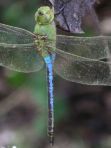 Aeshnidae [darners] |
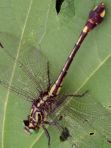 Gomphidae [clubtails] |
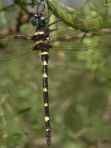 Macromiidae [cruisers] |
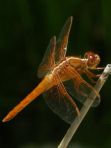 Libellulidae [skimmers] |
||
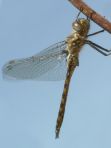 Corduliidae [baskettails] |
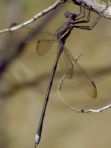 Lestidae [spreadwing damsels] |
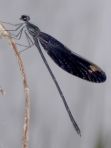 Calopterygidae [broad-winged damsels] |
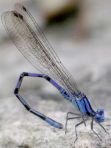 Coenagrionidae [pond damsels] |
![]()